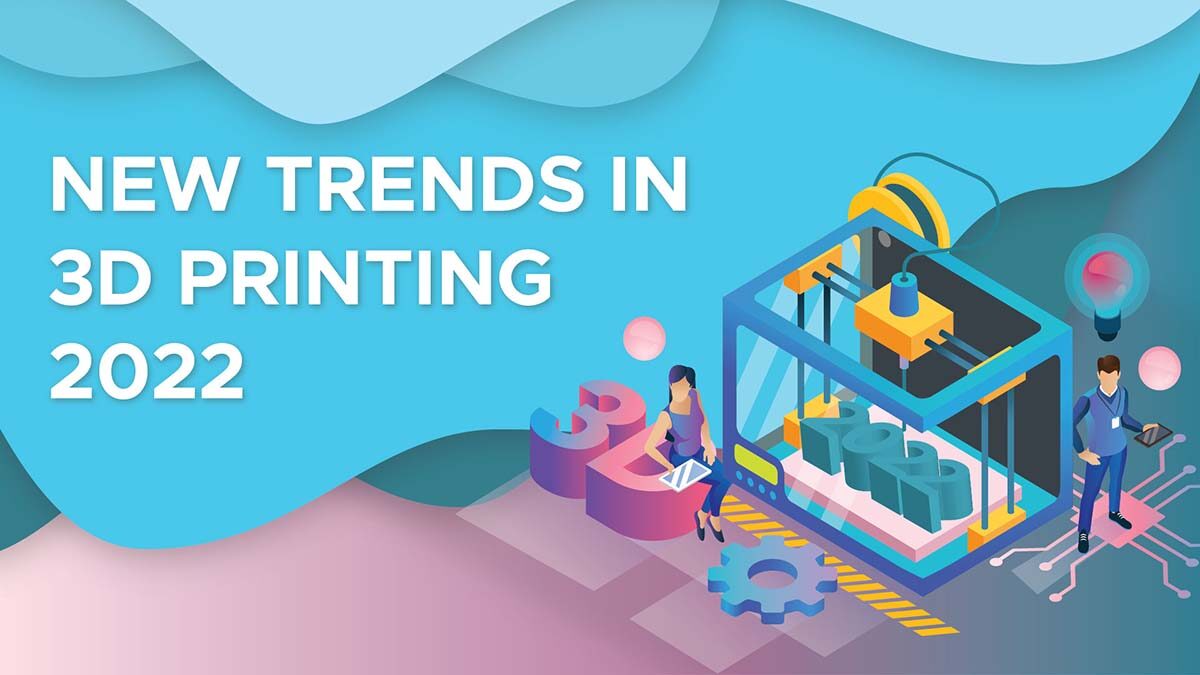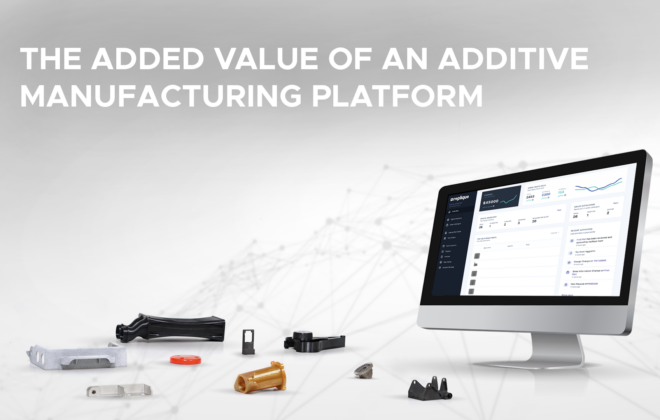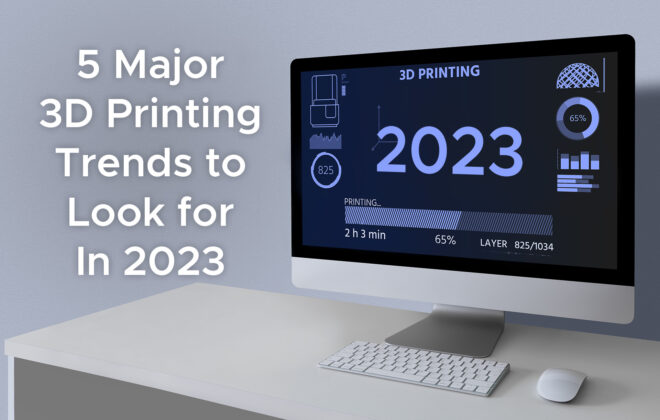Where is 3D printing heading towards? 6 trends to watch in 2022
Looking at the last year it does feel as 3D printing is becoming a serious and mature manufacturing technology, not only for prototypes but also for small and medium sized series. In this blog we want to show 6 trends of which we think they will have a major impact on the 3D printing industry and the people using the technology in 2022 and beyond.
1. The new era of 3D printing: bigger, faster and cheaper
3D printing technologies are developing quickly, and they are getting bigger, faster, and cheaper. With the rising demand for specialized materials to fulfil the required properties of end-parts, the range of materials in AM will widen. The key for the new generation of printers is their ability to handle a greater range of advanced materials, as this opens the door for businesses to benefit from AM where they previously could not. One great example of new materials is the development of metal filaments for FDM printing.
Although machine costs are remaining high, with increasing speed, part costs are coming down. As more and more businesses switch to 3D printing, these advancements will accelerate. With processes such as dual extrusion, the versatility of 3D printing is growing, and we see uptake of 3D printing in a wider range of industries. Another trend we see realising more significant development is printing without the use of support structures, which again broadens the range of applications of AM. In our eyes the potential for cost and time savings are highly favourable.
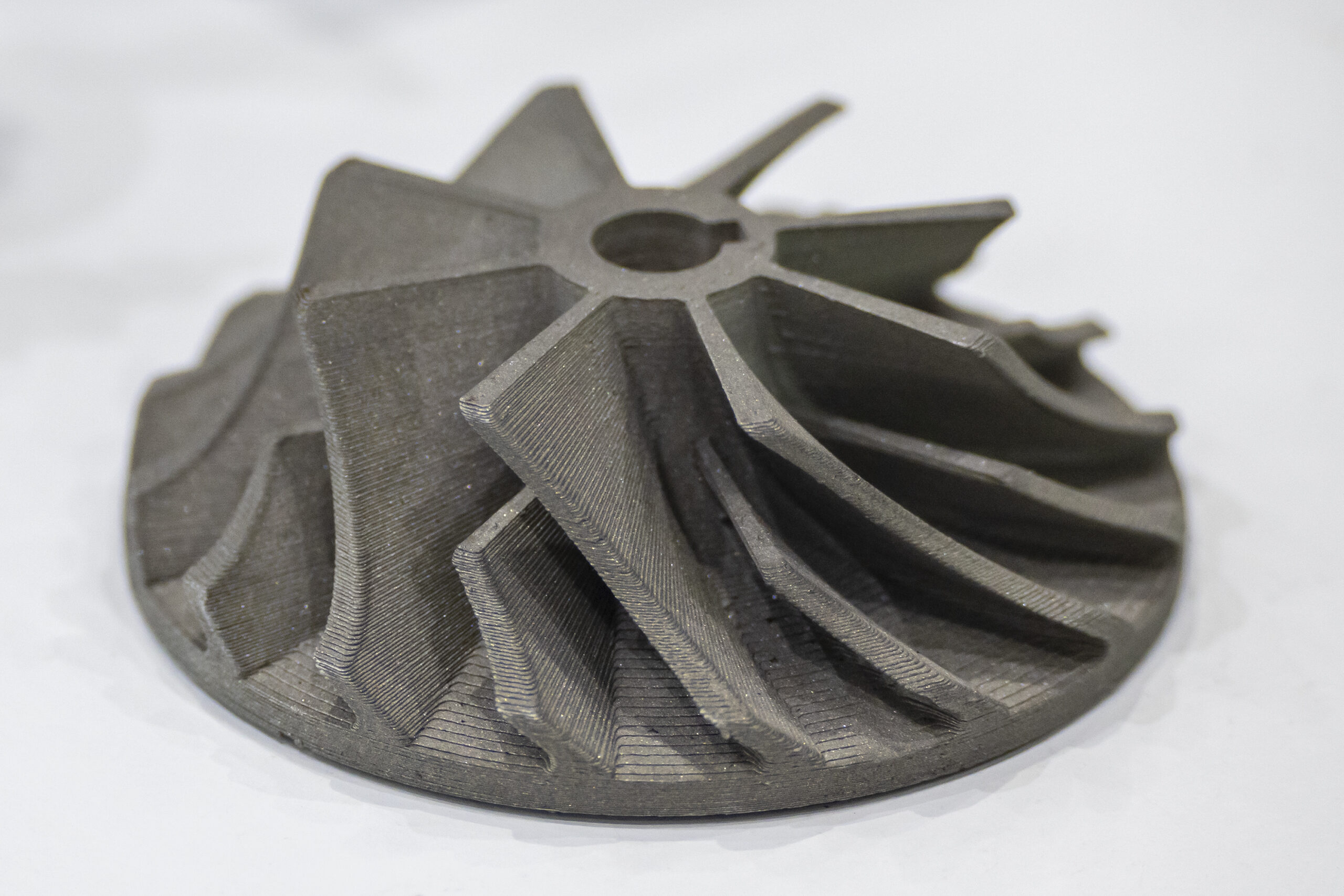
2. AM as an integrated supply chain approach
For manufacturers, it’s not just about having new and improved printers. To maximise benefit, manufacturers would need a large range of printers, materials, and importantly, connections with other industry professionals. Furthermore, interoperability between all the different systems is becoming an important issue to really make use of the 3D printing. Automation in production and post-processing as well as an integrated usability will be an important trend in 2022 and beyond.
At Replique, we provide a whole new supply chain approach, offering AM as part of a holistic and secure platform where the individual steps from concept to materials, digital inventory, production, and delivery are combined into one process. As manufacturers strive towards Industry 4.0, services offering a fully automated, yet secure, platform will drive this change forward.
3. From individual partnerships to an ecosystem
Partnerships can create mutual benefits and synergies that improve the offering of both partners and lead to a greater product for the end-customers. Also, in the world of 3D printing this proved to be a main enabler to scale industrial production. However, for 2022 we see the need of a more holistic collaboration. Standards have to be developed together, printer and post-processing systems should be able to work together; and collected production data could lead to improved printers and materials.
With Replique, we are building an ecosystem where we connect all the players on the market. We work together with different service providers, material producers and print farms worldwide. Only with close collaborations and permanent exchange we can offer our customers the best solutions.
4. Security and quality assurance as part of the AM industrialization
3D printing continues to transform the industries of today, with companies adopting the technology more and more for their needs. An integrated production environment arises. However, to be ready for industrial production, companies have to be assured that their 3D printed parts meet certain quality requirements. Moreover, data ownership will play a crucial role. Intellectual property needs to stay in the right hands and has to be controlled by the right people. We believe that data management will be a huge topic in 2022 and beyond.
In terms of quality assurance, Replique carefully selects production partners to identify and check their capability and to ensure repeatable fit-for-purpose parts. In addition, we enforce manufacturing parameters by our encryption, so the parts can only be produced in the requested amount and quality. The design data stays in the right hands. By collecting manufacturing data and analysing it we can detect mistakes quickly, improve the process and meet all quality requirements.
5. 3D printing for a resilient supply chain
Yes, we know, this issue has been discussed several times and it was one of the main issues in 2020 and 2021, yet we feel that supply chain disruptions will continue to be part of 2022. Not only COVID-19, but also other events such as the obstruction of the Suez Canal have showed the vulnerability of supply chains. Well balanced global supply chains were affected severely and achieved cost-benefits from just-in-time deliveries were quickly eaten up by last minute air freight tariffs to supply a key customer or other emergency measures.
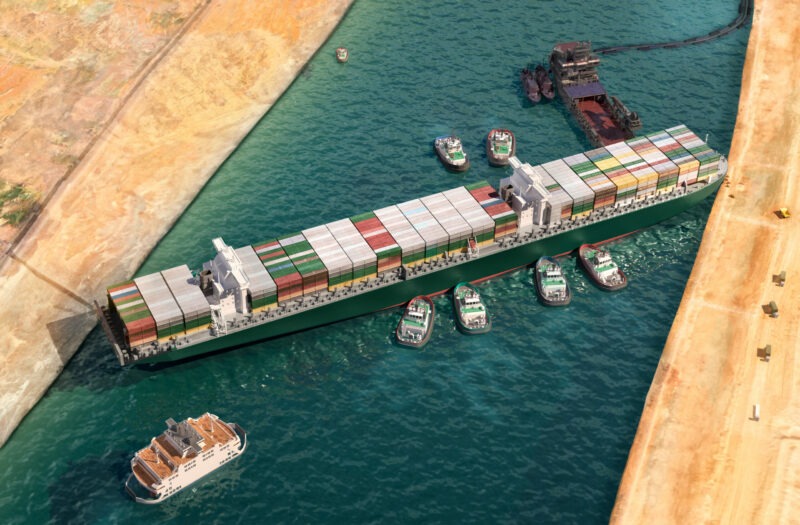
3D printing has already been used in the past years as a solution to those problems and the use of it is going to increase it 2022. With the decentralization of supply chains and the production on-demand close to the location of the consumer, AM enables shorter, stronger and more resilient supply chains.
The fact that parts can be housed digitally rather than in a physical warehouse, eliminates both storage and transportation costs. With Replique’s model, once a part is ordered, it is automatically sent to the best fitting most appropriate production partner in our AM network based on location, capabilities and capacity. Parts can be produced everywhere and at any time, even at remote locations – reducing CO2 in logistics and improving supply chain resiliency.
6. Additive manufacturing driving sustainability forward
Not only driven by the demand of end-customers, but also by official regulations and own beliefs, a sustainable production and supply chain is becoming necessary. This trend also finds its way into 3D printing. Being an additive production process 3D printing can – in the right use case – reduce waste during production. By specifically designing a part for AM it can drastically reduce the weight of the end part. Moreover, when using 3D printing on-demand and decentral, it could reduce the number of parts in inventory and associated waste, as well as CO2 emissions during transport.
For 2022 we therefore see a growing usage of 3D printing as part of companies’ sustainability strategy. To further improve sustainability of AM, the energy consumption during production has to be reduced. Moreover, we see a growth of sustainable AM materials such as recycled, reusable, and biodegradable plastics.
Conclusion
2022 seems to be THE year for 3D printing. A lot of new developments will drive the industrialisation of AM forward. One of the main reasons so far, why AM has not yet reached large-scale production is that printing times are too long. Injection moulding allows for standardised parts to be made consistently and quickly. However, 3D printing is still a fairly new technology, and is developing at a rapid pace. Alongside improvements in production speed, quality and build plate size, the price of such printers is decreasing. 3D printing will also enable a more resilient and sustainable supply chain approach that makes the technology more attractive for companies. New developments within security, quality assurance and interoperability will make the technology accessible for a wider range of producers. Even if still far away from mass production, we therefore see potential production volumes for 3D printing growing.
If you are interested to learn more about the trends of 3D printing in 2022, we recommend you to also have a look at the article from 3D Printing Industry, where our co-founder Henrike, together with other experts from the industry, is talking more about current trends.
Categories
- 3D printing industries (6)
- 3D Printing Materials (1)
- Basics (3)
- News (1)
- Point of View (10)
- Press (20)
- Press (20)
- Sustainability (3)
- Technology (6)
- Uncategorized (1)
- White Paper (1)
